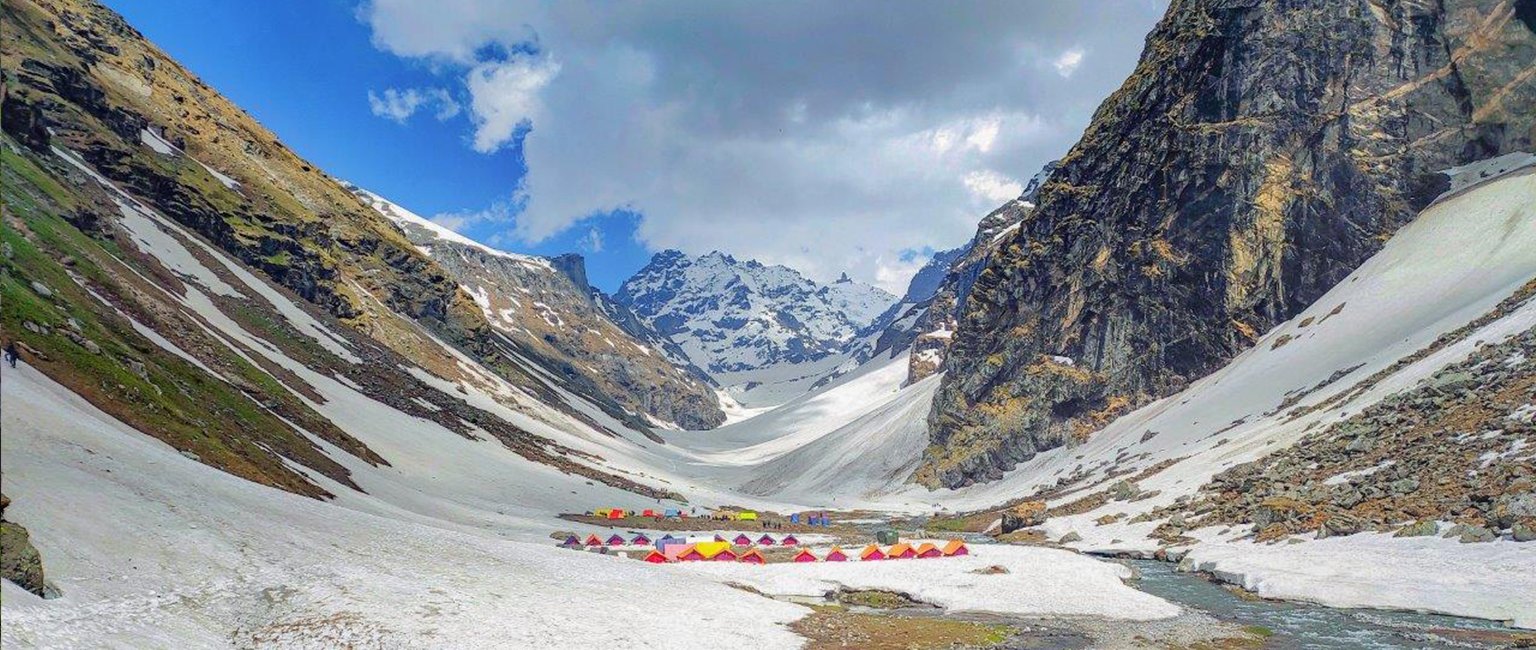🗻 Hampta Pass Trek Itinerary – 5-Day Guide from Manali
| Moderate Difficulty | Best Season: June–September
The Hampta Pass Trek is a high-altitude crossover trek between the lush Kullu Valley and the stark desert landscapes of Spiti. Here’s a detailed, day-wise itinerary to help you plan this scenic and unforgettable adventure.
📋 Trek Overview
- 📍 Starting Point: Manali
- ⛺ Max Altitude: 14,100 ft (Hampta Pass)
- 📏 Total Trek Distance: ~26 km
- 🗓️ Duration: 5 Days / 4 Nights
- ⛰️ Difficulty Level: Moderate
- 📅 Best Season: Mid-June to September
🧭 Day-wise Hampta Pass Trek Itinerary
🚶♂️ Day 1: Manali → Jobra (Drive) → Chika (Trek)
Altitude: 10,100 ft | Trek: 2 km | Time: 1.5 hrs trek + 2 hrs drive
Begin with a drive from Manali to Jobra (2 hours). Start your trek through pine forests, crossing wooden bridges and meadows to reach Chika campsite.
- 🌲 Forest Trails
- 🌊 Rani Nallah Stream
- 🏕️ First-night Camping
🥾 Day 2: Chika → Balu Ka Ghera
Altitude: 11,900 ft | Trek: 5 km | Time: 5 hours
Follow the river upstream. Enjoy incredible views of the Dhauladhar range. The trail involves river crossings and boulder zones.
- 🏞️ Glacial Valley Views
- 🌉 Water Crossings
- 🪨 Rocky Patches
⛰️ Day 3: Balu Ka Ghera → Hampta Pass → Shea Goru(Hampta Pass trek)
Altitude: 14,100 ft (pass) → 12,900 ft (camp) | Trek: 8-9 km | Time: 8–9 hours
This is the toughest and most rewarding day. A steep climb leads to the Hampta Pass with jaw-dropping 360° views. Descend carefully to Shea Goru, a high-altitude meadow.
- ❄️ Snowfields & Glacier Views
- 🔭 Summit Panorama
- 🌄 Spiti Valley Begins
🏜️ Day 4: Shea Goru → Chatru → Optional Chandratal Visit
Altitude: 11,000 ft | Trek: 7 km | Drive: Optional 3 hrs to Chandratal
Descend into the barren, rocky terrain of Lahaul. Vehicles pick you up at Chatru. If roads are open (July–Sept), drive to visit the magical Chandratal Lake.
- 🪐 Stark Himalayan Desert
- 🚙 Drive to Chandratal (optional)
- 🌌 Stargazing Opportunity
🚌 Day 5: Chatru/Chandratal → Manali (Drive via Rohtang)
Drive Time: 6–8 hours
End your trek with a drive back to Manali via the iconic Rohtang Pass. The road gives you breathtaking views of both green and barren worlds.
- 🛣️ Rohtang Highway
- 🎞️ Photo Stops
- 🍲 Hot Meals in Manali
🏨 Book Best Hotels in Manali
🎒 What to Pack for Hampta Pass Trek
- 🧥 3-layer Clothing (Base, Insulation, Waterproof)
- 🥾 Trekking Boots + Extra Socks
- 🧢 Cap, Gloves, Sunglasses, Sunscreen
- 💧 Water Bottle + Electrolytes
- 🧻 Toiletries, Headlamp, Small First Aid Kit
❓ Frequently Asked Questions
Is Hampta Pass Trek good for beginners?
Yes, it’s one of the best treks for first-timers. Basic fitness and preparation are required.
Do you need a guide or can you go solo?
Guides are recommended due to river crossings, altitude, and weather unpredictability.
Is Chandratal always accessible?
Only if the road is open (typically mid-July to September). Otherwise, the trek ends at Chatru.




Tour Reviews
There are no reviews yet.
Leave a Review